File ManagerAccount SettingsAccessing The SoftwareSupportTeam ManagementFull Demos
Certification
SkyCiv has built out a range of features that make the modelling process extremely and fast and easy. One of these great set of mouse click functions, that once used to, can allow users to mock up a model with a few clicks.
There are a range of tools that you can choose from. These can be accessed by clicking the pen icon to launch the following great tools:
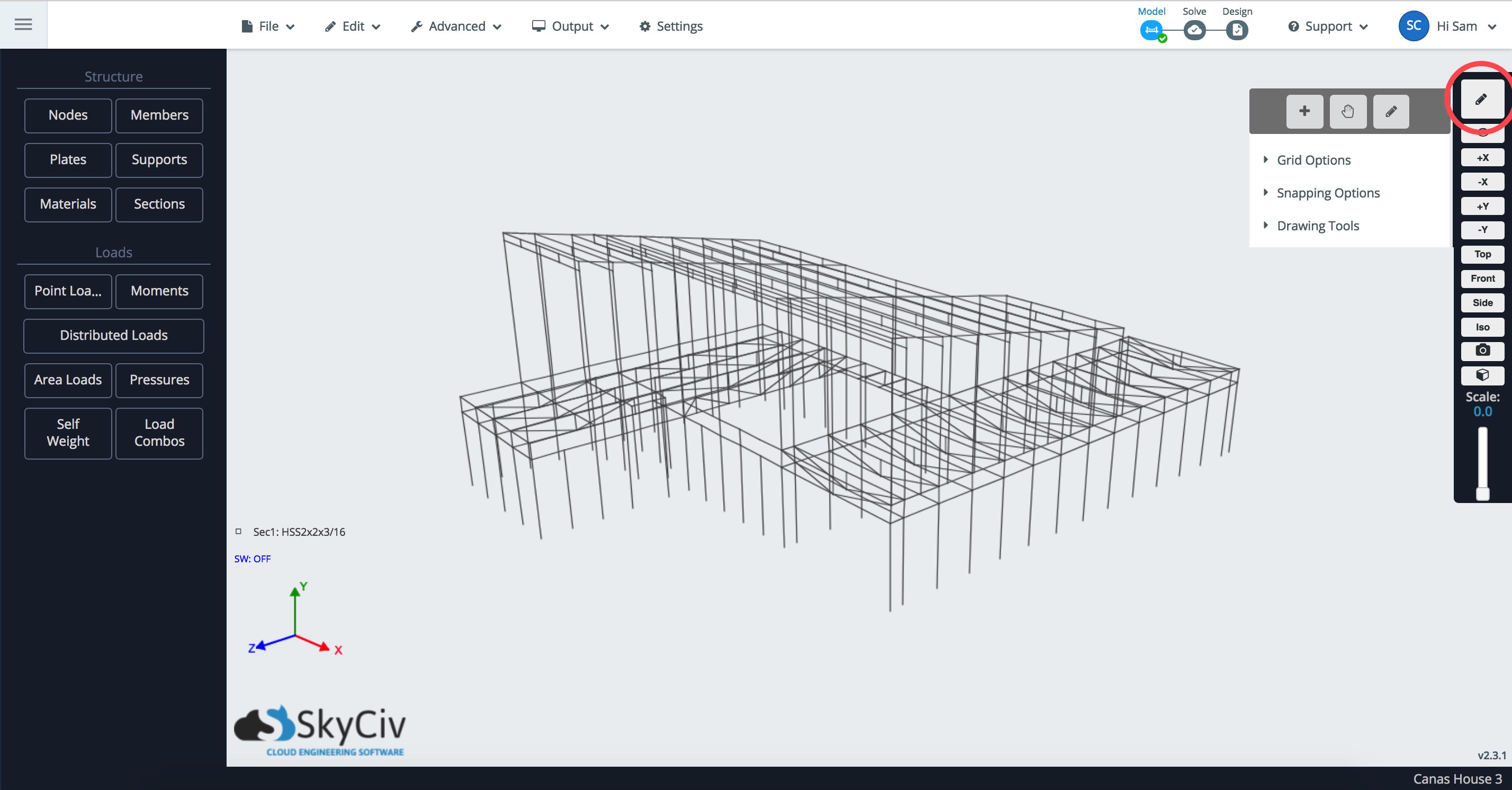
Grids can be toggled on to help provide reference to your structure and model using a mouse click (in combination with draw tool).
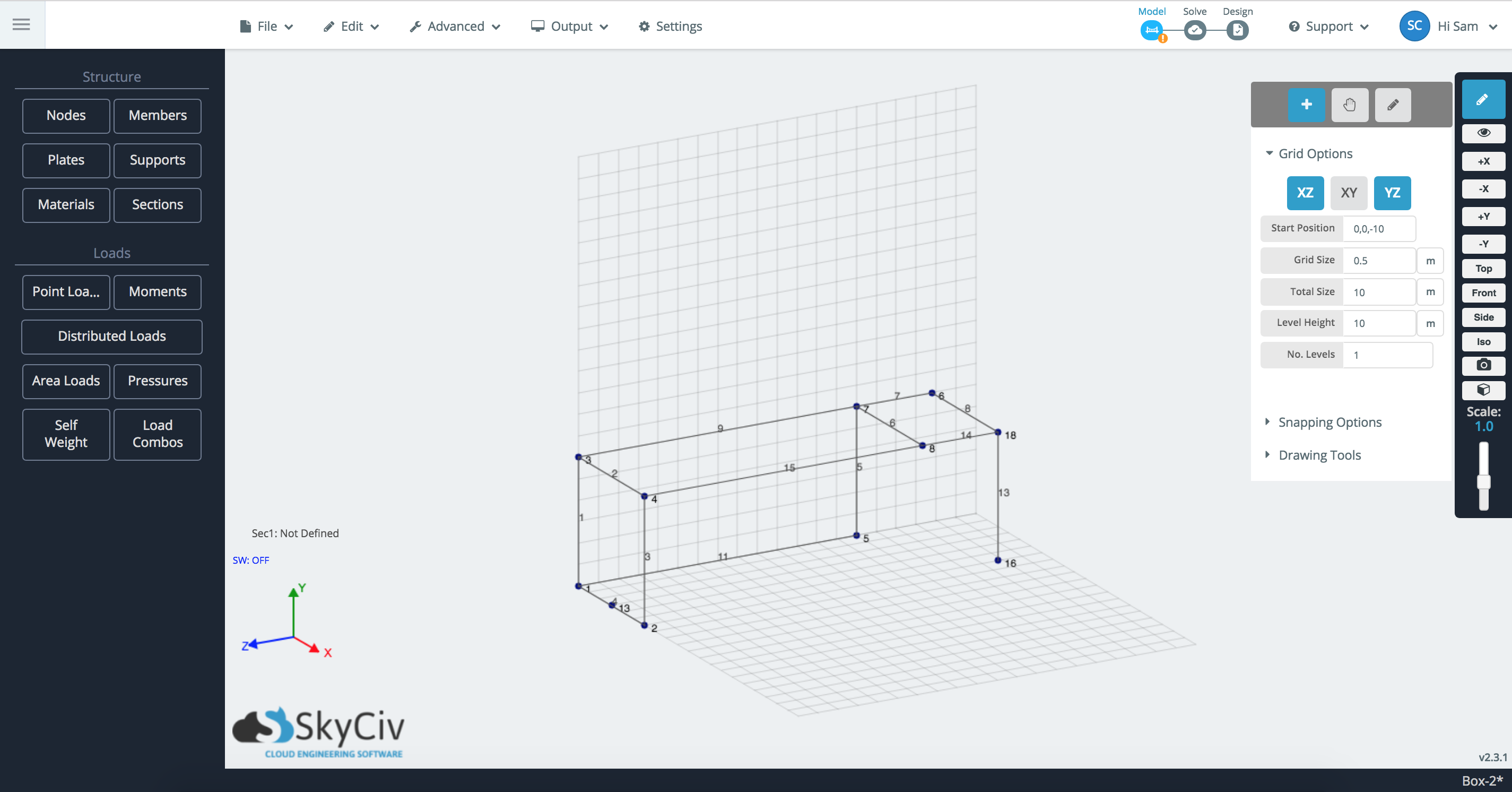

There are a number of controls for the user defined grid:
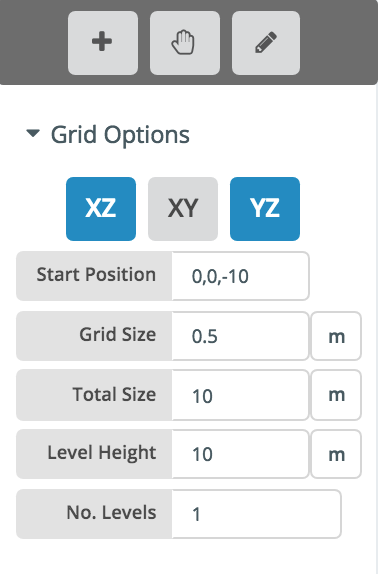
With the draw tool toggled on, users can hover over any point on the grid and plot a node. If the setting Show Coordinates under Snap Options is ticked on, it will show the coordinates of that grid position, so you know where the node will be positioned.
Snapping is an easy way to plot nodes using the mouse. Simply hover (or click) a node to define this node as being the reference point. Then move your cursor along the global X,Y or Z axis and it will snap to that axis - shown as a dotted red, green or blue line depending on what axis is being snapped. The snapping tool might also pickup a secondary axis, such as an alignment of another node. To disable that refeence node, simply click somewhere that is not snapped, or hit Esc.
Here is an example of the pen tool snapping to the global Z axis, with reference to node 2. It is also picking up a secondary axis of node 5's Z coordinate:
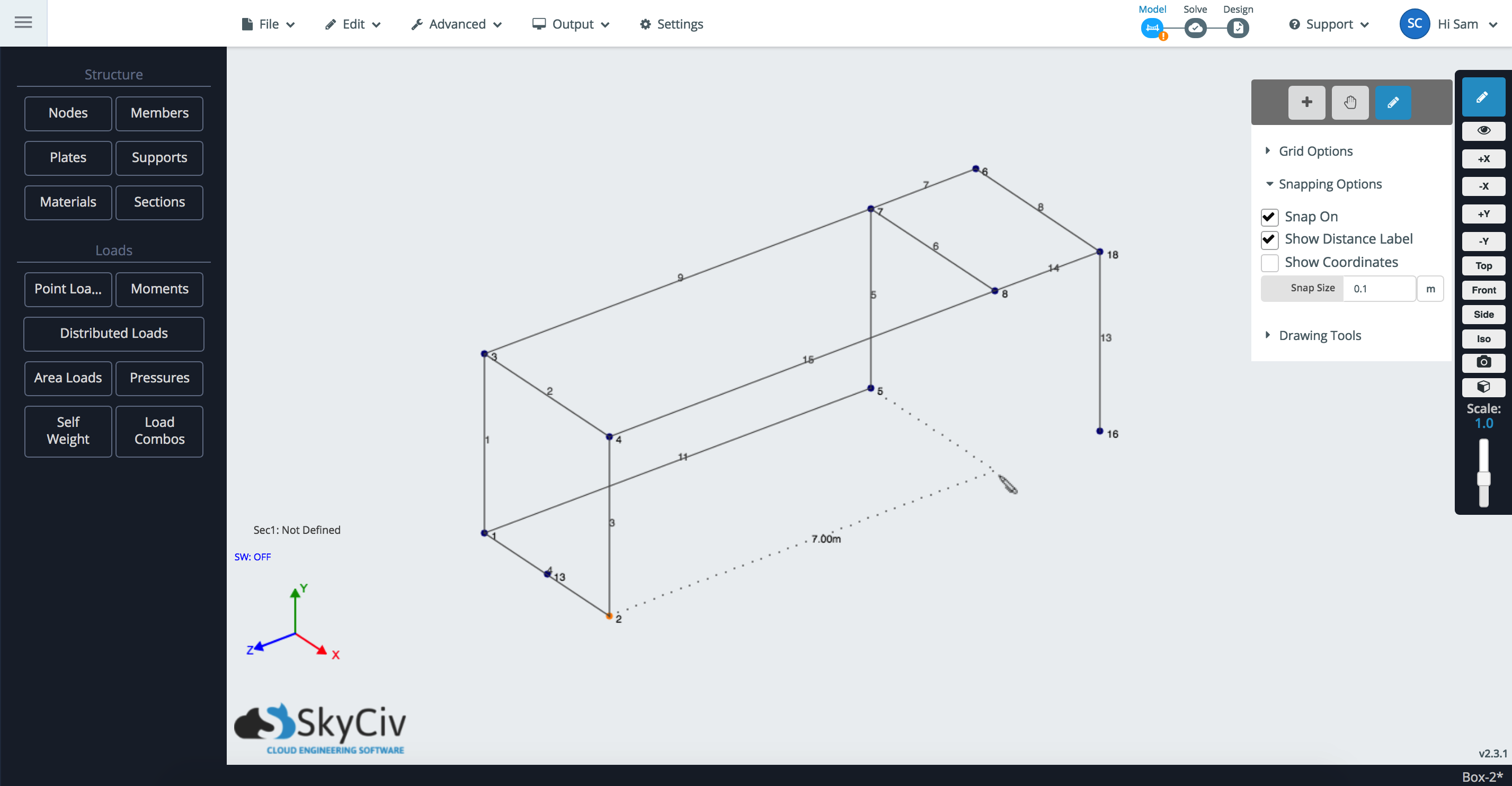
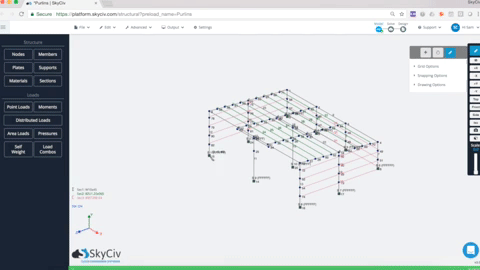
The snapping options
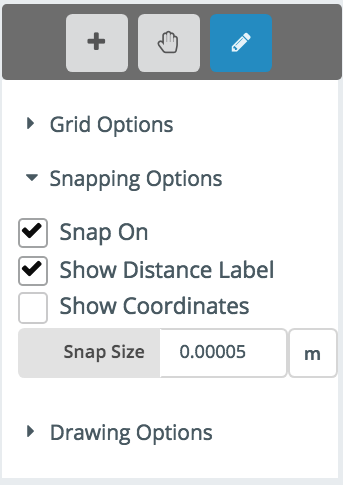
The snap size attribute will directly modify the size of the structure that is being displayed in order to make it easier for the user to snap to the correct increments. For instance, a small snap of 5 mm will shrink the model down to a size that makes this easy to work with. This can be controlled at anytime and is useful to control the following behaviour:
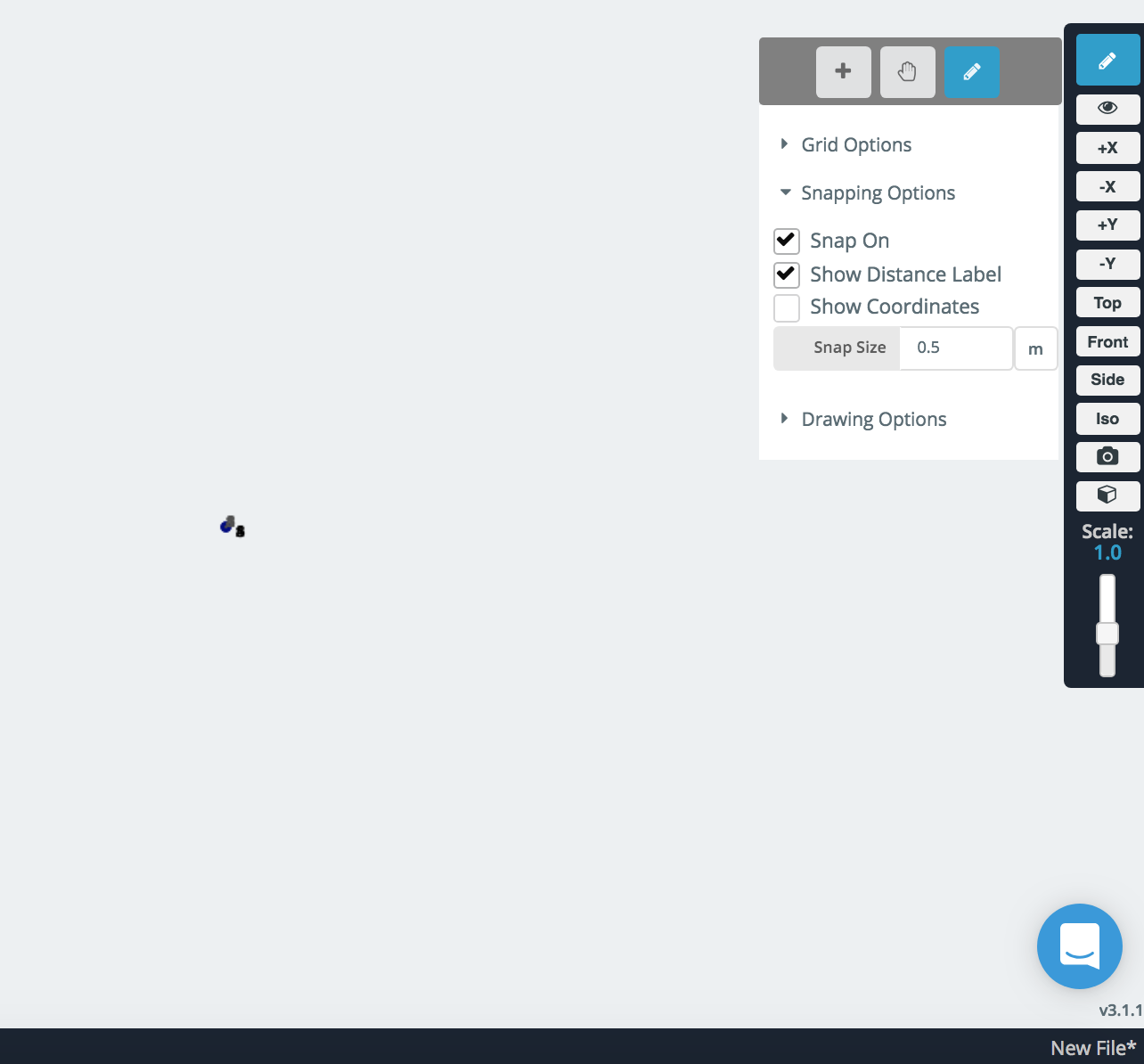
Very small structure with a large snap size
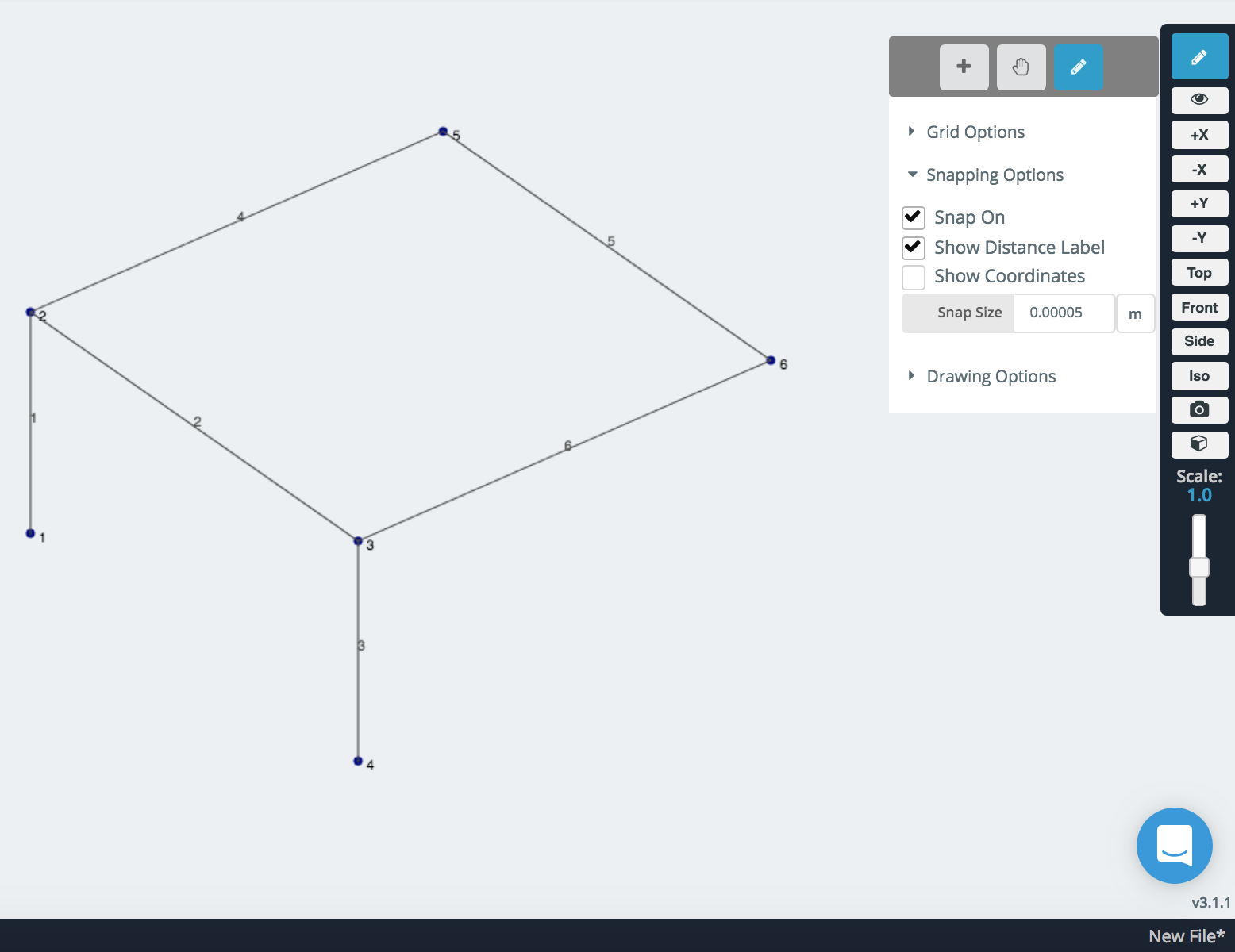
This can be fixed by reducing the snap size